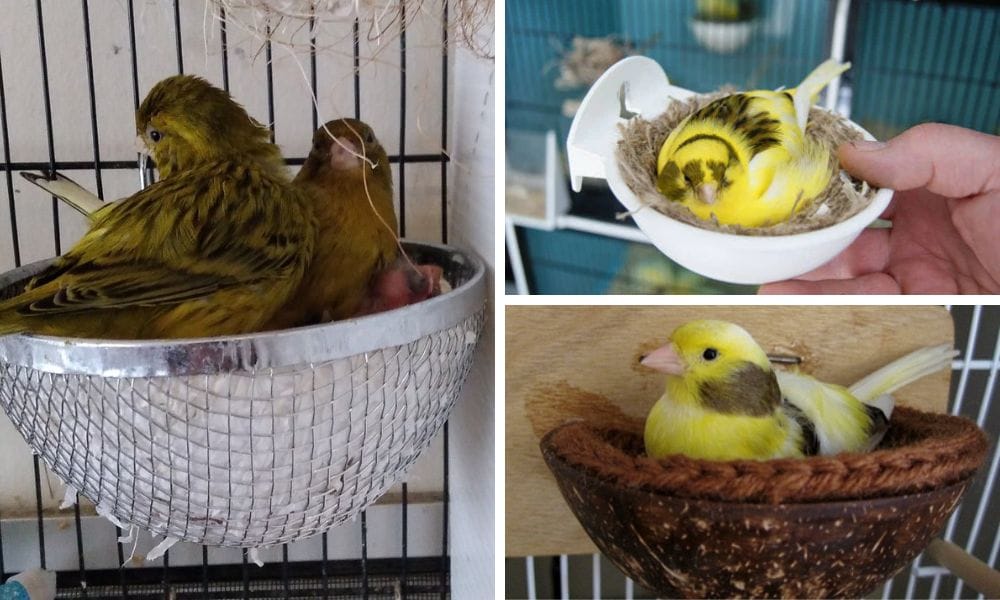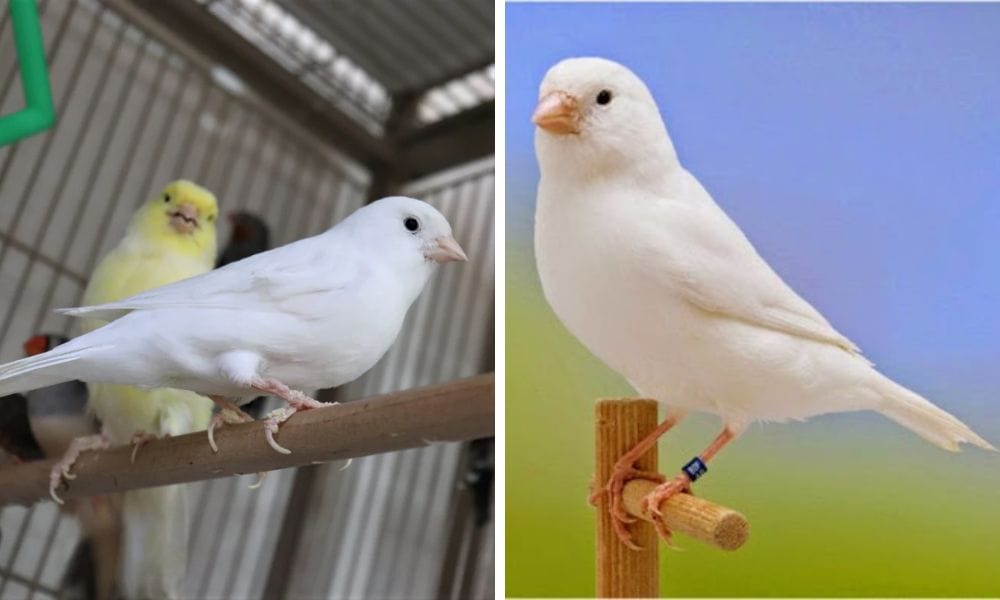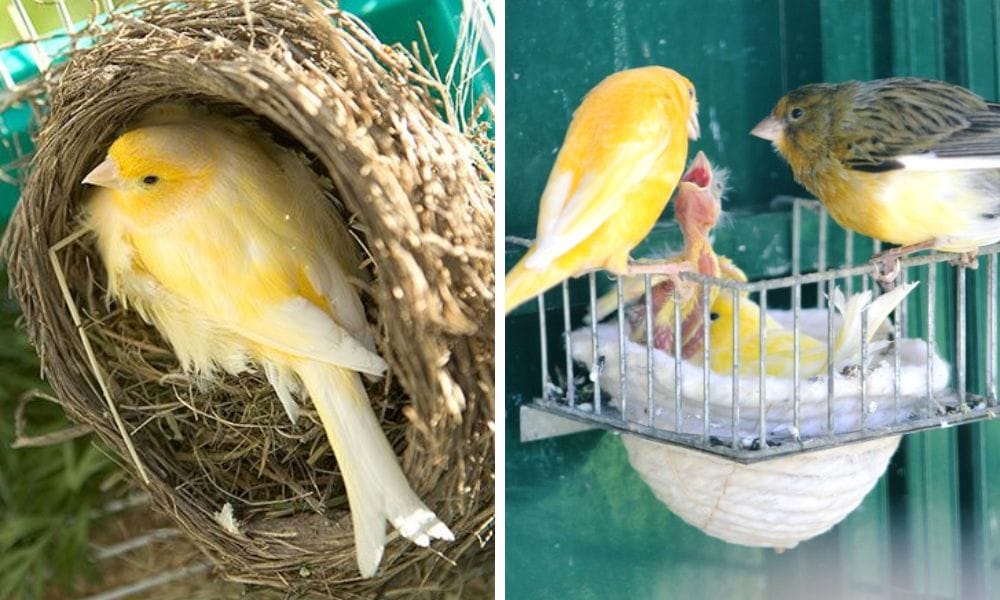The Ultimate Guide to Canary Nest: Everything You Need to Know
Attention all bird lovers! In this blog we're going to show you everything you need to know about setting up a Canary Nest, and with it how to give your wee pal the ultimate perch.

Key Takeaways:
- Understanding the importance of the right canary nest for your bird's health and breeding success.
- Tips on selecting the perfect location and style of nest for your canaries.
- Maintenance and care for canary nests to ensure a safe and nurturing environment.
What is a Canary Nest?
When it comes to breeding canaries, the canary nest is a pivotal aspect of their habitat. It's not just a place for them to rest; it's where they will raise their family. A proper nest ensures that your birds feel secure and comfortable enough to lay and hatch their eggs. The selection results in a successful breeding season largely depend on the type of nest you provide.
Canary nests come in various materials, such as bamboo, metal, or even synthetic fibers. Each material offers different benefits and it's essential to understand which type suits your birds the best. The style of the nest can also influence your canary's breeding behavior, so it's important to review your options before making a decision.
Choosing the Right Location
The location of the canary nest within the cage is just as crucial as the nest itself. Canaries prefer a quiet, sheltered spot away from the hustle and bustle of household activity. The ideal location should be at a moderate height in the cage, as too high can be dangerous for the chicks and too low might not be secure from potential threats.
Moreover, the location should allow you to easily add to the nest or refresh it with new materials as needed. It should also enable you to observe the birds without disturbing them, ensuring that you can keep an eye on the progress of the eggs and the health of the canary family.
Understanding Canary Nesting Behavior
Canaries are fascinating creatures, and their nesting behavior is a subject of great interest for both avian enthusiasts and pet owners. When it comes to nesting, canaries exhibit a strong instinct to find a secure and comfortable spot. This is where they will lay their eggs and raise their young. Observing these behaviors can provide valuable insights into ensuring the health and happiness of your feathered friends. It's important to recognize the signs that your canary is ready to nest, such as gathering materials or becoming more territorial. By understanding these behaviors, you can better prepare the nesting environment to suit their natural inclinations. For exampe you can find our more about white canary bird in or blog below.

Moreover, canaries are known to be selective when it comes to accepting a nesting site. They might inspect several locations before settling on the perfect one. This is a critical phase where the pet owner must pay close attention to the canary's preferences. If a canary does not accept the offered nest, it may be necessary to try different styles or materials, as mentioned earlier in the guide. Observing your canary's behavior during this time is key to providing a nest that will be readily accepted and used for the complete nesting cycle.
The Role of Lighting in Canary Nesting
Lighting plays a pivotal role in the breeding and nesting behavior of canaries. It's not just about providing light; it's about mimicking the natural light patterns that signal to the birds that it's the right time to breed. A gradual increase in daylight hours, for instance, can stimulate the canary's reproductive system. This is a sign that spring is coming, which is the natural breeding season for canaries. Pet owners can use timers and special lighting systems to recreate these conditions indoors, encouraging their canaries to enter the breeding phase and start looking for a suitable nesting spot.
On the other hand, too much artificial light or erratic lighting schedules can disrupt the canary's natural breeding cycle. It's crucial to find the right balance and create a dialed-in lighting schedule that mimics the sunrise and sunset. This not only helps in setting the mood for nesting but also ensures the overall well-being of the canaries. A consistent light cycle helps regulate their biological clock, leading to healthier, happier birds that are more likely to successfully breed and rear their young. Remember, the goal is to replicate the natural conditions as closely as possible, so your canaries feel at home and ready to nest.
The Perfect Nest Style and Material
When selecting a nest for your canaries, consider the style that will best suit your birds. Some canary owners prefer the open cup style, while others opt for a closed nest box. Each style has its own set of advantages, and your choice may depend on the specific breed of canary you have.
Bamboo nests are popular due to their natural look and feel, which can encourage the canaries' instinct to breed. Metal nests are durable and easy to clean but may require additional nesting materials to make them cozy. It's essential to review customer comments and ratings to ensure you're getting a nest that's well-received by both birds and breeders alike.

Nest Maintenance and Care
Maintaining the cleanliness of the canary nest is vital for the health of your birds. Regularly check the nest for any signs of parasites or waste and clean it accordingly. Some nests are designed to be disposable, which can save time and ensure a hygienic environment for each breeding cycle.
It's also important to refresh the nesting materials periodically. This not only keeps the nest clean but also stimulates the canaries' natural behavior to build and prepare the nest for their eggs. Always have a stock of nesting materials on hand to add to the nest when needed.
Where to Find Canary Nests
Finding the right canary nest is easier than ever with the plethora of options available online. A quick search on your favorite pet supply site will yield a full page of results, with images to help you visualize each option. Make sure to read the product description and reviews thoroughly to understand what you're purchasing.
When you find a nest that fits your criteria, you can usually save it to your account for later or add it to your cart to purchase immediately. If you have any questions, don't hesitate to contact the seller or use the comment section to get feedback from other canary owners.
Summary
In summary, the right canary nest is essential for the health and breeding success of your canaries. It's important to select a nest that suits your birds' needs in terms of material, style, and location within the cage. Regular maintenance and care of the nest are crucial to provide a clean and safe environment for your canary family. With the convenience of online shopping, you can easily search, review, and purchase the perfect nest for your feathered friends.
FAQ Section
Q: What materials are best for a canary nest? A: Bamboo, metal, and synthetic fibers are common materials for canary nests. Bamboo is natural and cozy, metal is durable and easy to clean, and synthetic fibers can be soft and comfortable. The best material depends on your birds' preferences and your maintenance capabilities.
Q: How often should I replace the nesting materials? A: You should refresh the nesting materials whenever they become soiled or worn out. This could be as often as after each breeding cycle or more frequently if needed.
Q: Can I make a DIY canary nest? A: Yes, you can make a DIY canary nest using safe, non-toxic materials. Ensure that the nest is sturdy, comfortable, and free from any sharp edges or hazards. Homemade nests can be a cost-effective and customizable option for your canaries.

